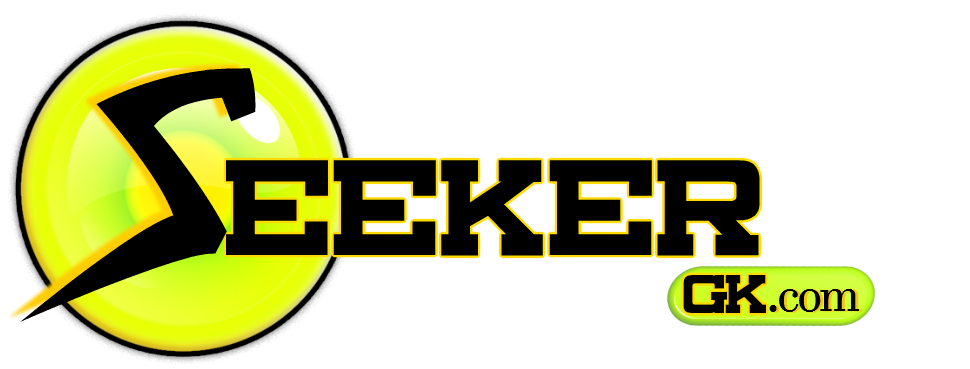Essay Outline:
I. Introduction
A. Introduction of the topic: Technology as a Servant and a Master
B. Brief discussion on the dual nature of technology
C. Statement of the essay’s focus
II. Understanding Technology
A. Explanation of what constitutes technology
B. Overview of the evolution of technology
C. Current state of technology
III. Technology as a Useful Servant
A. Improvement in productivity and efficiency
B. Enhancement of communication and information dissemination
C. Role of technology in healthcare advancements
D. Technology in education and self-improvement
E. Contribution of technology to entertainment and leisure
F. Technology’s role in data analysis and decision making
G. Aid provided by technology in routine tasks
H. Innovation and new possibilities opened by technology
I. Technological solutions to environmental challenges
J. Technology’s role in promoting social connectivity
IV. Technology as a Dangerous Master
A. Addiction and over-dependence on technology
B. Cybersecurity threats and data privacy issues
C. Dehumanization and loss of personal touch
D. Technological unemployment and skills gap
E. Health issues related to technology overuse
F. Technology-fueled societal divides
G. Role of technology in spreading misinformation
H. Environmental issues due to excessive technological production
I. Ethical issues related to technology misuse
J. Challenges of regulating technology and maintaining accountability
V. Balancing the Servant and the Master: Recommendations
A. The importance of digital literacy and technology education
B. Promotion of ethical and responsible use of technology
C. Policy recommendations for managing technology’s impact
D. Encouraging human-centric technology design
VI. Conclusion
A. Recap of the dual nature of technology
B. Reflection on balancing technology as a servant and a master
C. Final thoughts on the future of technology and its role in society
Complete Essay: “Technology is a useful servant but a dangerous master.”
I. Introduction
“Technology is a useful servant but a dangerous master,” a profound statement coined by Norwegian diplomat Christian Lous Lange, perfectly captures the paradoxical nature of technology. In our modern world, technology has become an integral part of our lives, shaping how we work, communicate, and navigate the world around us. It has brought unprecedented convenience, efficiency, and connectivity. However, as we immerse ourselves deeper into the realm of technology, it is crucial to recognize that its immense power can also pose significant risks and challenges. This essay delves into the intricate relationship between humanity and technology, examining the ways in which it serves as a valuable tool while simultaneously presenting potential dangers that must be navigated with caution. By exploring both the positive and negative aspects of technology, we can gain a deeper understanding of its influence and strive to strike a balance that harnesses its benefits while mitigating its potential harm.
II. Understanding Technology
Technology, encompassing the application of scientific knowledge for practical purposes, has become an inseparable part of our lives, shaping how we work, communicate, learn, and entertain. From the earliest tools to the latest advancements in artificial intelligence, technology has propelled human progress. In the digital age, with the internet, smartphones, and machine learning, technology has evolved into a ubiquitous force. It offers unprecedented connectivity, convenience, and efficiency. However, it is essential to recognize that technology’s impact is not solely positive. As a double-edged sword, technology can be both a useful servant and a dangerous master. Understanding its complexities and potential implications is crucial for striking a balance that maximizes its benefits while minimizing its risks.
III. Technology as a Useful Servant
A. Improvement in Productivity and Efficiency
Technology serves as a beneficial tool that remarkably boosts productivity and efficiency in various domains. With the integration of automation and artificial intelligence (AI), numerous industrial processes have been streamlined. This transition reduces manual labor significantly and accelerates the pace of production, which is critical in meeting increasing demands. In our personal lives, various technological tools such as calendar apps, email systems, and project management software aid us in organizing our tasks more efficiently, leading to improved time management and productivity.
B. Enhancement of Communication and Information Dissemination
Significant technological advancements like the internet and smartphones have dramatically revolutionized communication, transforming it into an instantaneous and boundary-less process. Regardless of whether it’s breaking news, educational content, or personal messages, information can now be disseminated rapidly and widely across the globe, connecting people like never before.
C. Role of Technology in Healthcare Advancements
Technology plays a pivotal role in revolutionizing healthcare by improving diagnostic and therapeutic tools, which have greatly enhanced patient care and increased lifespan. For example, telemedicine, a product of technological innovation, has made healthcare accessible to remote areas, bridging the gap between healthcare providers and patients separated by distance.
D. Technology in Education and Self-improvement
In the educational sector, technology provides an abundance of learning resources, making education more accessible and inclusive. E-learning platforms, digital textbooks, and educational applications democratize education, allowing for flexible learning opportunities anytime, anywhere.
E. Contribution of Technology to Entertainment and Leisure
Technology also extends to the sphere of entertainment and leisure. Digital platforms for streaming music and movies, along with video games, provide a plethora of entertainment options catering to diverse tastes and preferences, enhancing our leisure time.
F. Technology’s Role in Data Analysis and Decision Making
In the world of business and research, technology is an invaluable ally in processing and analyzing vast amounts of data. Tools like machine learning and AI enable us to derive patterns and insights from complex datasets that are beyond human analytical capabilities. These insights often lead to more informed and strategic decision-making, which is crucial for innovation and strategic planning.
G. Aid Provided by Technology in Routine Tasks
Technology simplifies our routine tasks, reducing the burden and freeing up time for more engaging pursuits. Examples include smart home systems that manage lighting and temperature settings, and financial apps that assist in managing personal finances.
H. Innovation and New Possibilities Opened by Technology
Technology fuels innovation, paving the path for novel products, services, and methodologies. One such example is the emergence of blockchain technology, which has given rise to groundbreaking concepts like cryptocurrencies and decentralized finance, reshaping our financial systems.
I. Technological Solutions to Environmental Challenges
Technology offers potential solutions to address environmental challenges. Examples include the development of renewable energy technologies, waste-to-energy conversion systems, and climate modeling software. These innovations can help predict, mitigate, and adapt to the impacts of climate change, a pressing global issue.
J. Technology’s Role in Promoting Social Connectivity
Technology, through social media and communication apps, promotes social connectivity by enabling individuals to stay connected despite geographical barriers. It fosters a sense of community, allowing individuals to share experiences and engage in collective action on a global scale.
IV. Technology as a Dangerous Master
A. Addiction and Over-dependence on Technology
Technology, despite its many benefits, can lead to problems when it transitions from being a useful servant to a dangerous master. One such issue is the over-dependence on technology leading to addiction. Excessive screen time can lead to adverse mental health outcomes, such as anxiety and depression, and can disrupt face-to-face social interactions.
B. Cybersecurity Threats and Data Privacy Issues
The digital age has brought along new forms of security threats and privacy concerns. The increase in cybercrimes such as hacking, identity theft, cyberstalking, and data breaches pose substantial risks to individuals and businesses, highlighting the importance of robust cybersecurity measures.
C. Dehumanization and Loss of Personal Touch
Over-reliance on technology can lead to a loss of personal touch and dehumanization, especially in areas where human interaction is crucial. This is particularly evident in customer service, where automated responses often lack the empathy and understanding that only human interaction can provide.
D. Technological Unemployment and Skills Gap
Advancements in technology can lead to job displacement due to automation. Certain tasks and roles can become obsolete, leading to unemployment and a widening skills gap. If not addressed, this can result in increased economic inequality and social challenges.
E. Health Issues Related to Technology Overuse
Overuse of technology, particularly screen-based devices, has been linked to a variety of health issues, including eye strain, sedentary behavior, sleep disturbances, and mental health problems like anxiety and depression. These highlight the need for balanced and responsible usage of technology.
F. Technology-Fueled Societal Divides
Technology can also exacerbate societal divides due to unequal access and digital literacy. This digital divide can worsen existing inequalities, leaving marginalized communities disadvantaged in terms of education, job opportunities, and access to essential services.
G. Role of Technology in Spreading Misinformation
While technology aids in the rapid dissemination of information, it can also lead to the spread of misinformation and fake news. Social media platforms can be manipulated to disseminate false information, leading to confusion, mistrust, and societal divisions.
H. Environmental Issues Due to Excessive Technological Production
Technological production contributes to environmental issues, including resource depletion, electronic waste, and carbon emissions. The continuous drive for newer, faster, and more advanced technologies without considering the ecological implications leads to significant environmental concerns.
I. Ethical Issues Related to Technology Misuse
As technology evolves, it gives rise to new ethical challenges. These include issues such as privacy invasion, unethical use of AI and surveillance technologies, and ethical dilemmas posed by autonomous systems. Such issues require thoughtful consideration and regulatory action.
J. Challenges of Regulating Technology and Maintaining Accountability
The fast pace of technological advancements often outpaces existing regulatory frameworks, presenting significant challenges in ensuring accountability and addressing potential risks effectively. Hence, there is a need for agile and adaptive regulatory frameworks that can keep up with the rapid evolution of technology.
V. Balancing the Servant and the Master: Recommendations
A. The Importance of Digital Literacy and Technology Education
To navigate the complexities of technology, digital literacy and technology education should be prioritized. This involves equipping individuals with the skills and knowledge necessary to understand, critically evaluate, and responsibly use technology.
B. Promotion of Ethical and Responsible Use of Technology
Companies, policymakers, and individuals must prioritize ethical and responsible use of technology. This includes establishing guidelines for data privacy, addressing algorithmic biases, and promoting transparency in technological developments.
C. Policy Recommendations for Managing Technology’s Impact
Policymakers should actively engage in creating policies that address the impact of technology on employment, education, privacy, and societal well-being. This includes fostering an environment that supports innovation while ensuring adequate safeguards and protections for individuals.
D. Encouraging Human-Centric Technology Design
Technology design should prioritize the human experience and well-being. Emphasizing user-centric design, empathy, and considering the broader societal impact can help mitigate potential negative consequences of technology.
VI. Conclusion
In conclusion, technology serves as both a useful servant and a dangerous master. Its benefits in enhancing productivity, enabling connectivity, and driving innovation are undeniable. However, the risks associated with addiction, privacy breaches, dehumanization, and societal divides cannot be ignored. Striking a balance between the benefits and challenges of technology requires collective efforts, including digital literacy, ethical considerations, effective regulation, and human-centric design. By harnessing technology as a servant while recognizing its potential dangers, we can shape a future where technology empowers individuals, enriches society, and maintains human values.

